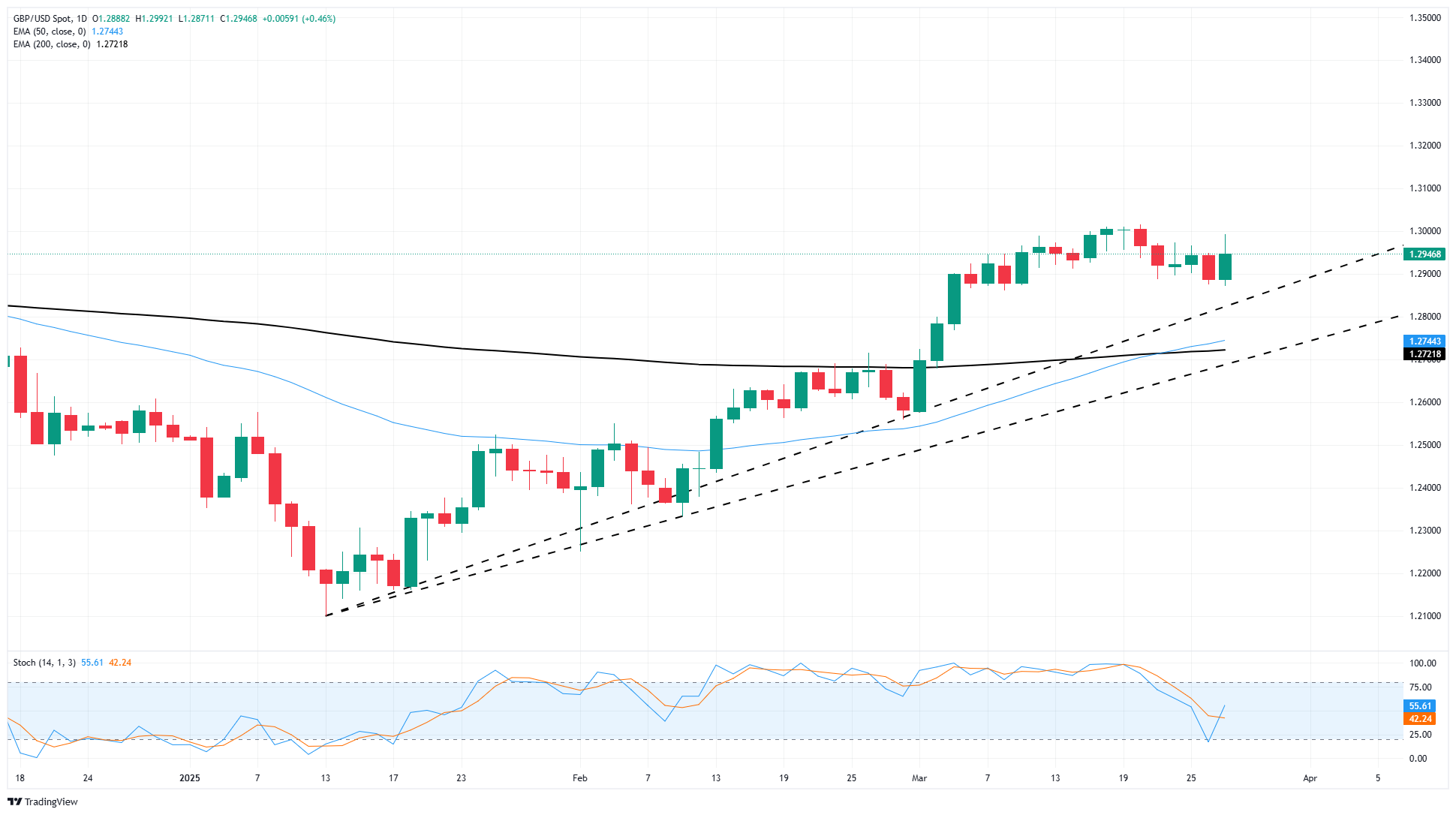- The GBP/USD bounced half a percentage point on Thursday.
- Commercial concerns are increasing, but Libra operators are ignoring tariff risks.
- The key inflation data of the US is coming on Friday, but first the growth of the United Kingdom and retail sales.
The GBP/USD found the accelerator on Thursday, recovering half a percentage point and rising above 1,2900. The 1.3000 key price zone is still out of reach for the buyers of the Libra, but the fight against a decline resumes.
The Prime Minister of the United Kingdom, Kier Starmer, warned Thursday that, although US tariffs will be “devastating” for the economy of the United Kingdom, those responsible for the policy are still committed to fighting the unequal approach of the US president, Donald Trump, towards the global commercial policy. The comments of the PM Starmer coincided with similar statements by the Canadian Prime Minister, Mark Carney, since most of the former US business partners become increasingly hostile in commercial negotiations with the Trump administration.
The next key data batch of the United Kingdom will be the final update of the GDP of the fourth quarter and retail sales on Friday. It is expected that the GDP growth of the United Kingdom coincides with the previous figures during the fourth quarter of 2024, but retail sales figures are expected to be slightly in February.
The US GDP growth figures will also be published on Thursday, but non -preliminary impression is unlikely to drive a lot of impulse in any direction. This week’s US Key US Publication will be the underlying spending price index (PCE) that will be published on Friday. Investors expect a recent increase in inflation figures to be temporary, but medium forecasts hope that annualized PCE inflation will increase to 2.7% year -on -year in February.
Related news
-
Canadian Prime Minister Mark Carney: We will fight against US tariffs with own actions
-
The Fed expects uncertainty to be clarified before acting – Thomas Barkin
-
Fed: It is inevitable that tariffs increase short -term inflation – Susan Collins
GBP/USD price forecast
Despite a short -term increase in the purchase pressure, the GBP/USD remains limited below the 1.3000 key price zone. The downward impulse remains limited, and buyers remain in the market, keeping the cable above the 200 -day exponential mobile average (EMA) about 1,2720.
GBP/USD daily graphics
LIBRA ESTERLINA FAQS
The sterling pound (GBP) is the oldest currency in the world (886 AD) and the official currency of the United Kingdom. It is the fourth most commercialized currency exchange unit (FX) in the world, representing 12% of all transactions, with an average of $ 630 billion a day, according to data from 2022. Its key commercial peers are GBP/USD, which represents 11% of FX, GBP/JPY (3%) and EUR/GBP (2%). The sterling pound is issued by the Bank of England (BOE).
The most important factor that influences the value of sterling pound is the monetary policy decided by the Bank of England. The Bank of England bases its decisions itself has achieved its main objective of “price stability”: a constant inflation rate of around 2%. Its main tool to achieve this is the adjustment of interest rates. When inflation is too high, the Bank of England will try to control it by raising interest rates, which makes access to credit for people and companies more expensive. This is generally positive for sterling pound, since higher interest rates make the United Kingdom a more attractive place for global investors to invest their money. When inflation falls too much it is a sign that economic growth is slowing down. In this scenario, the Bank of England will consider lowering interest rates to reduce credit, so that companies will borrow more to invest in projects that generate growth.
Published data measure the health of the economy and can affect the value of sterling pound. Indicators such as GDP, manufacturing and services PMI and employment can influence the direction of the sterling pound.
Another important fact that is published and affects the pound sterling is the commercial balance. This indicator measures the difference between what a country earns with its exports and what you spend on imports during a given period. If a country produces highly demanded export products, its currency will benefit exclusively from the additional demand created by foreign buyers seeking to buy those goods. Therefore, a positive net trade balance strengthens a currency and vice versa in the case of a negative balance
Source: Fx Street
I am Joshua Winder, a senior-level journalist and editor at World Stock Market. I specialize in covering news related to the stock market and economic trends. With more than 8 years of experience in this field, I have become an expert in financial reporting.







